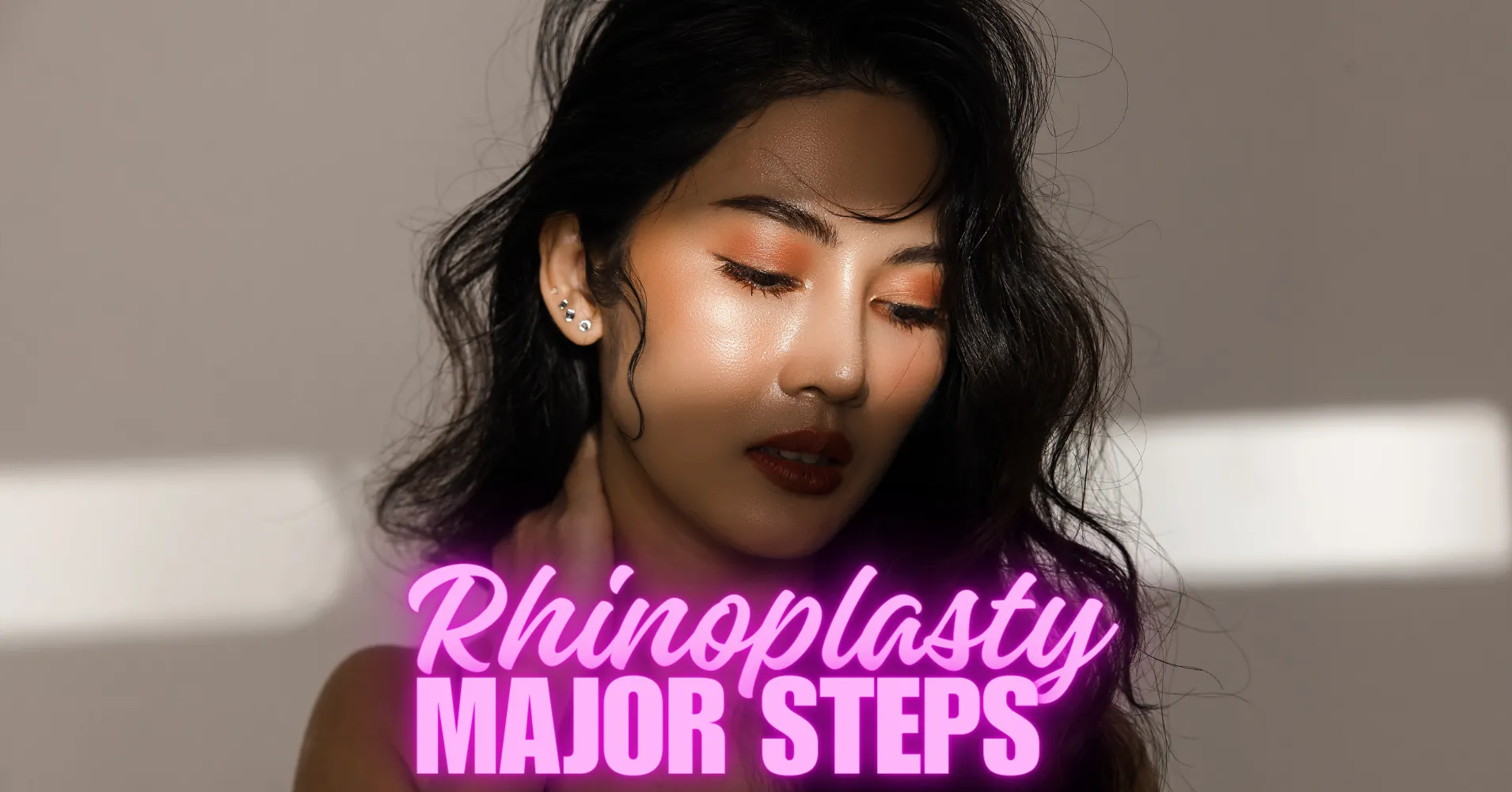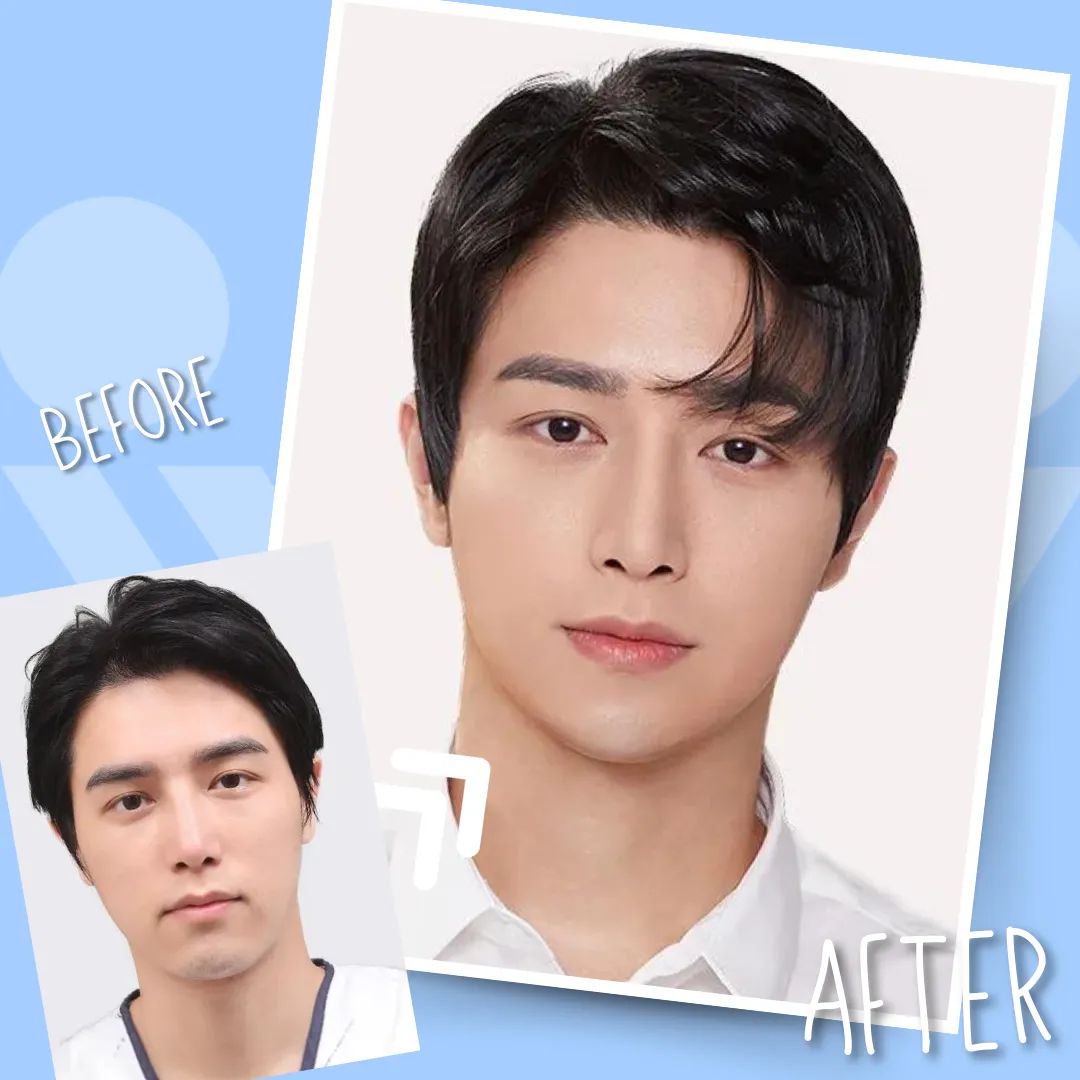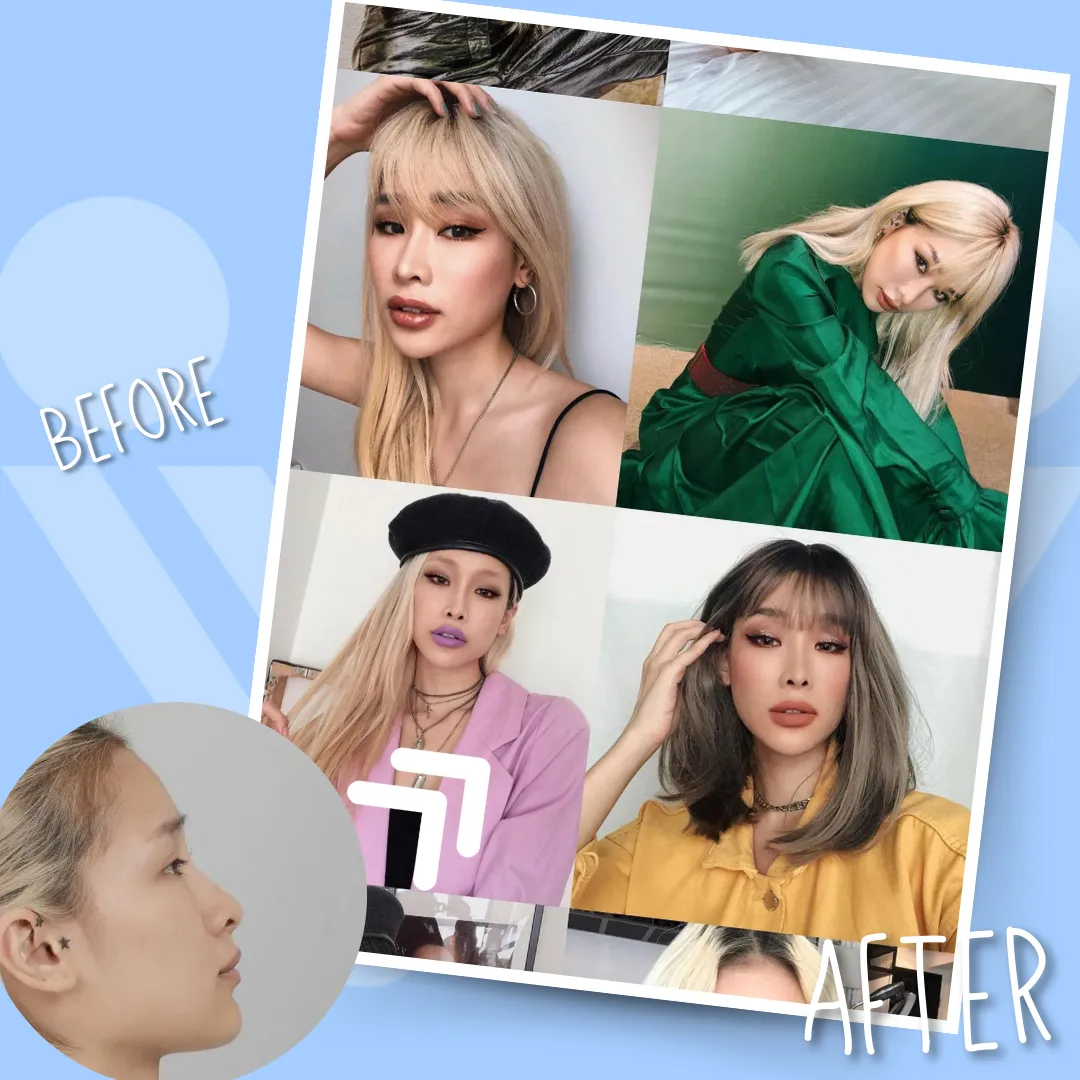Journal
Rhinoplasty: Major Steps
2024-05-08
Nose

The nose is one of the prominent facial features that is considered an important criterion in determining the beauty of the entire face. The size of the nose, which is larger than usual or smaller compared to the facial features, greatly affects the symmetry of the face and makes it disproportionate to the rest of the facial details. It may even make the person appear older and cause him/her embarrassment. Some people may consider it a matter of external appearance only, but the reality is otherwise. The feeling of embarrassment and discomfort may worsen and affect the person psychologically, weaken his/her self-confidence, and reduce his/her self-esteem. This is what prompts many people who are dissatisfied with the shape of their nose or face difficulties in breathing, to take the decisive decision and undergo rhinoplasty surgery.
If you are among those who are considering rhinoplasty and have not yet made a final decision, then you are in the right place. In this blog, we will help you gain a deeper understanding of the rhinoplasty procedure by providing details about the steps to be followed during the rhinoplasty surgery journey.
What is Rhinoplasty?
Rhinoplasty surgery aims primarily to reshape the nose (bones, cartilage, and skin) or improve its shape, and it has functional benefits as well. Among the most important results required by the patients when deciding to undergo a rhinoplasty:
- Reducing the overall nose size if it is very large and reducing the nostril width
- Enlarging the nose if its size is very small
- Reducing and raising the tip of the nose
- Reducing or straightening the bridge of the nose
- Correction of deviated nasal septum
- Removing the convexity of the bridge of the nose (hump reduction)
- Enhancement of the bridge of the nose
- Shaping the nose using cartilage grafts
Suitable candidate for Rhinoplasty:
- Someone aged 18 years and over
- Someone with realistic expectations and goals
- Someone who does not suffer from chronic diseases or health problems that prevent the possibility of undergoing the surgery
- Someone who has no breathing difficulty
- Someone who is dissatisfied with the nose shape
- A non-smoking patient or planning to quit before and after the surgery


The steps of Rhinoplasty surgery
Preparations before Rhinoplasty
Medical consultation with the surgeon before the surgery
It is very important to prepare for the consultation session with the surgeon before rhinoplasty, during which the surgeon evaluates the patient’s general health condition, current health status, and risk factors that may hinder surgery. It also studies and discusses the options available to improve the shape of the nose to be in harmony with the rest of the facial details and discusses the potential risks as well. The medical consultation is the appropriate time to ask the surgeon questions and understand the details of the surgery, pre-operative preparations, and post-operative recommendations.
During the consultation session, the surgeon is keen to review the patient’s medical history and understand why he/she wants to undergo the procedure. Planning the appropriate course of treatment for the patient’s condition requires protective expectations and goals.
Medical pictures
Usually, one of the medical staff assistants takes high-resolution photos of the patient’s nose from different angles: a frontal photo, a frontal photo with a smile, a photo from below, a right-side photo, a right-side photo at an angle of 45 degrees, a left-side photo, a photo Left-side photo at an angle of 45 degrees.
Physical examination
The physical examination is an important stage before rhinoplasty, as the surgeon examines the patient's nose to study the thickness of the skin and the condition of the bones, cartilage, and nasal tissues. The surgeon checks the patient's breathing to detect whether he/she is breathing through the nose or mouth. After collecting the necessary information through tactile and visual examination, the next stage begins, which includes analyses and x-ray or CT images.
Blood tests
A blood test is performed using a fine needle. Based on the results of the tests, the doctor decides whether the patient is suitable for rhinoplasty surgery or if he/she is in a health condition that hinders the possibility of having the surgery.
The blood analysis is useful in providing:
- Anemia analysis (CBC.diff)
- Blood clotting test (PTT, PT)
- Determination of blood sugar level (FBS)
- Human Immunodeficiency Virus (HIV) testing
- Hepatitis examination
Based on the results of the blood analysis and the patient’s general health condition, the doctor may request additional tests, such as an electrocardiogram and x-rays to examine the lungs.
Electrocardiogram examination
An electrocardiogram (ECG) is a painless test that helps measure the electrical activity of the heart and detects some heart problems. The patient lies down on a designated bed and must remain calm and silent during the test to ensure that the tracking system is not affected. Electrodes are connected to the chest, legs, and arms, which are small sensors, and in a short period of time, an electrocardiogram is performed. The computer records information from electrical signals and displays it on a screen and then on paper in the form of waves.
The Electrocardiogram ECG is very useful, and here are some of its benefits :
- It helps detect cardiac arrhythmias and heart rate: abnormally fast heartbeats (tachycardia) or abnormally slow heartbeats (bradycardia)
- The possibility of a previous heart attack
- It helps to discover whether the patient suffers from coronary artery disease
- It helps determine the heart’s supply of blood and oxygen
CT-scan
Thanks to the CT-scan, the surgeon is able to detect whether the patient suffers from a deviated nasal septum or sinuses, and it also helps in understanding the structure of the patient’s nose in a deeper way.
List of things to be avoided before rhinoplasty surgery
- Stop smoking for 2 to 3 weeks before surgery: Nicotine has negative and dangerous effects on surgery, even if you are exposed to passive smoking. Carbon dioxide affects the blood vessels and impedes the delivery of oxygen and nutrients to various parts of the body, which affects the recovery process and increases the possibility of side complications after surgery. Nicotine may also disrupt anesthesia and make it difficult for surgical scars to heal. The longer the period of avoiding smoking, the better the results of rhinoplasty.
- Stop drinking alcohol for at least two weeks before surgery: Alcohol causes blood thinning and increases the possibility of anesthesia problems and severe bleeding during the surgery. The longer the period of avoiding alcohol, the better the results of rhinoplasty.
- Stop taking aspirin, ibuprofen, or vitamin E at least two weeks before surgery: medications classified as non-steroidal anti-inflammatory drugs, in addition to vitamins, may increase the possibility of severe bleeding during the operation, as they are considered medications that thin the blood. The patient is only allowed to take medications prescribed by his direct physician.
- Do not wear jewelry or contact lenses, wear cosmetics, or nail polish: Polishing nails or makeup may make it difficult for the doctor to detect low blood oxygen. Avoiding wearing contact lenses and jewelry ensures protection from bacterial infection during the procedure.
During Rhinoplasty
Depending on the degree of complexity of the surgery and the surgical plan agreed upon before the procedure, the surgeon chooses between two types of anesthesia:
- General anesthesia: The patient is given an anesthetic medication by inhalation or through an intravenous tube. It affects the entire body, so the patient falls asleep during the entire surgery and continues to breathe through the breathing tube.
- Local anesthesia with sedation: The use of this type of anesthesia is limited to specific areas of the body. The patient is injected with anesthetic medication into the tissues of the nose and then given medication through an intravenous tube. The patient then feels sleepy, but it is different from deep sleep during general anesthesia.
After ensuring that the patient's safety and comfort are maintained through anesthesia, the surgery is performed either through a closed internal procedure (closed nose technique), during which the surgical incisions are hidden inside the nose, or through an open nose procedure, during which a surgical incision is made through the tissues that separate the two nostrils (columella). Through these surgical incisions, the skin covering the bones and cartilage is lifted, which allows a clear view and makes it a bit easier for the surgeon.
Rhinoplasty surgery may sometimes require the usage of cartilage grafts to shape the nose. Nasal septal cartilage and ear cartilage are used if necessary. In some cases, the doctor may also need to use rib cartilage (donated rib cartilage or autologous rib cartilage).
The surgeon closes the surgical incision tightly and places gauze and a nasal splint to create the necessary support for the nose to boost the healing process.
The recovery phase after rhinoplasty
Possible complications after rhinoplasty surgery
- Exposure to bleeding
- Infection
- Difficulty breathing
- Poor wound healing and the appearance of scars
- Perforation of the nasal septum
- The appearance of the nose is unsatisfactory as overall
- Swellings occur
- Numbness in certain areas of the nose
- Rupture of blood vessels in the nose
Instructions to be followed after Rhinoplasty
- Avoid strenuous physical activities or bending over, as this causes high blood pressure and increases nasal congestion.
- Keep the bandages dry to avoid inflammation and infection
- Avoid some facial expressions that affect the nose, such as smiling or laughing
- Brush your teeth gently to avoid pushing the upper lip
- Help reduce pressure on the nose by sneezing and coughing with an open mouth
- Avoid nasal congestion by sleeping on your back and raising your head in an upright position
- Avoid direct exposure to sunlight to protect against permanent pigmentation
- Avoid eating salty or spicy foods because they increase swelling
- Taking medications prescribed by the doctor
- Eat foods rich in protein and different nutritional value
- Drink pumpkin juice to reduce swelling
- Avoid crowded places to protect the nose from
- Apply ice compresses around the eyes and nose to reduce swelling
- Avoid constantly touching bandages or splints
- Drink sufficient amounts of liquid, especially in the first period following the procedure
- Avoid hot baths and SPA, as they increase swelling
More about the recovery period: 5 effective tips to speed up recovery after Rhinoplasty

FAQ
When am I able to see the final results after rhinoplasty?
Improvements begin to appear within the first weeks of surgery, but final results may take months until the nose settles into its new shape and the swelling disappears completely.
Will there be a permanent scar after rhinoplasty surgery?
The experienced surgeon hides the surgical incisions he made with tight and precise stitches in a way that makes it difficult for us to discover the location of the scars after surgery.
Is it common to end up having breathing problems after rhinoplasty?
No. A skilled surgeon will make sure to alter the patient’s nose shape without affecting any functionality.
In general, a very trained surgeon will ensure:
- A natural-looking nose made in harmony with the overall facial features
- A nose ecstatically pleasant and functionally enhanced or preserved
Can I request not to have my nose packed after surgery?
The surgeon usually uses a thin silicone or plastic sheet and places it along the patient’s septum to avoid bleeding and for optimal healing. Depending on the patient’s condition, it can be removed on the second or third day following the surgery. You can consider it as a part of the prevention steps the surgeon takes.
Can I wear my glasses after rhinoplasty?
surgeons usually recommend avoiding wearing glasses (or sunglasses) especially directly on the nose bridge, because the glasses can press that area and might affect the shape.
Am I going to stay overnight at the hospital after surgery?
No. Most rhinoplasty surgeries are performed as outpatient procedures, allowing the patient to be discharged right after being recovered from anesthesia.
Related videos
Yidda: Our Influencer from Ecuador is getting a Nose Job
Back


